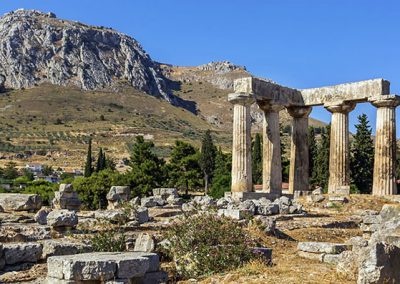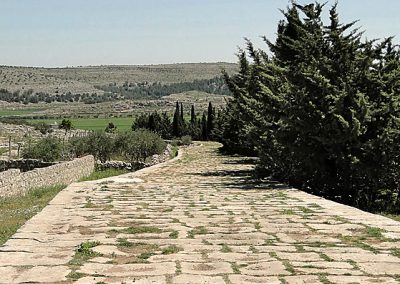
Bible, History, Archaeology
Bible,
History,
Archaeology
The apostle Paul, his life
«God has set me apart from my mother's womb».» wrote Paul around the age of fifty (Galatians 1,15). Paul was the object of exceptional preparation. (Philippians 3,4-6; Acts 21,39-22).
The family setting
We have most of the rare and certain data on his early years from the apostle himself:
- Born in Tarsus, capital of the province of Cilicia (probably around 5-10 CE). A city in southern Turkey, a Roman province in the northeast corner of the Mediterranean, bordering Syria. Tarsus had become a regional cultural center. All branches of the liberal arts were taught here.
Image opposite: the toga is the prerogative of Roman citizenship. It is the official garment used exclusively by Roman citizens to distinguish them from the rest of the Empire's inhabitants. Gowns are differentiated by the quality of the fabric, the drape and the color, which generally indicates the social rank and function of the wearer. Children and senators wore togas edged with a purple band. In sculpture, color is rendered using paint, which has now largely disappeared. © Théo Truschel.
- His father made him a Roman citizen. As a Roman citizen, he had to bear three names: the tria nomina :
Visit praenomen or personal name,
Visit nomen gentilicium or family name,
Visit cogomen or proper noun. Paulus would be the cognomen. Was his name Caius Julius Paulus, as some suggest?Paul of Tarsus, christianity's enfant terrible, p. 27, Daniel Marguerat).
- From a Jewish family in the Hellenistic diaspora (1). In 2 Corinthians 11:22, Paul claims to be a ’Hebrew« and an »Israelite’. The terms «Hebrew» and «Israelite» are not synonymous; the former refers to language, the latter to ethnicity.
- From the posterity of Abraham (circumcised on the 8th day, in accordance with Genesis 17,10-12). Jewish family of pure blood in both paternal and maternal lines.
- Of the people of Israel, tribe of Benjamin (the tribe loyal to Judah at the time of the schism (1 Kings 12.21 and following), bearer of the most illustrious name of this tribe (specially mentioned by Paul in Acts 13,21) that of King Saul, or Saul (meaning Desirous). The family's roots lie in northern Galilee, in Giscala.
- From the party of the Pharisees (Acts 26,5). This party was born in the 2nd century B.C., as part of the civil war against the Hasmonean regime (Jean Hyrcan, Alexandre Jannée), in reaction against the modernist policy of the Hasmonean court, which was under Hellenistic influence.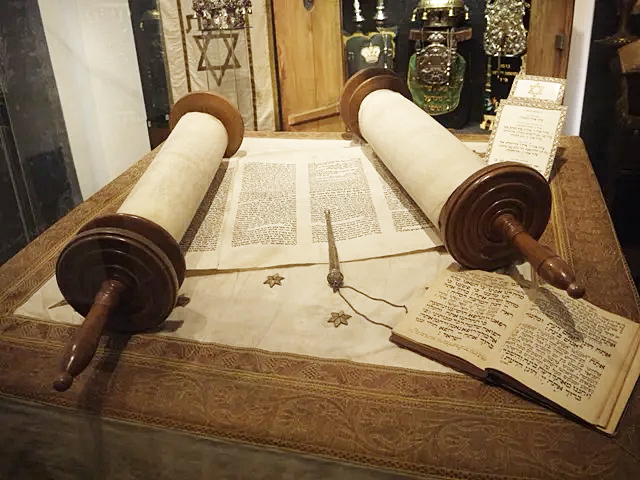
Image opposite A seder Torah unrolled with its reading pointer (yad) according to Jewish tradition. © D.R.
- Saul was not an only child. He is known to have at least one sister (see Acts 23:16, intervention of the «his sister's son») and a brother: Rufus, who was present in Rome when he was first imprisoned.
- He received a sports education, (see the many allusions to sporting competitions in his Epistles). He will be able to swim a day and a night after a shipwreck (2 Corinthians 11,25).
1 - Living outside Palestine and speaking Greek.
2 - Bar-mitsva, Aramaic word, also called Jewish communion. For the boy, it's the moment when he reaches his religious majority and counts as a person in the constitution of a miniane * allowing a collective service. Girls are ordained at the age of 12, with no special ceremony. * In Judaism, the miniane is the quorum of ten adults required for any religious service.

Bar mitzvah (Hebrew: בר מצווה) is the religious majority status acquired by young Jewish boys at the age of 13. By extension, the term also refers to the optional ceremony celebrating this passage. The female equivalent is bat mitzvah, when a Jewish girl reaches her religious majority at the age of 12. A ceremony may be held, usually within the family. These ceremonies have existed since the 14th century for boys, and since the 20th century for girls. EAZN 566214994.
The studies
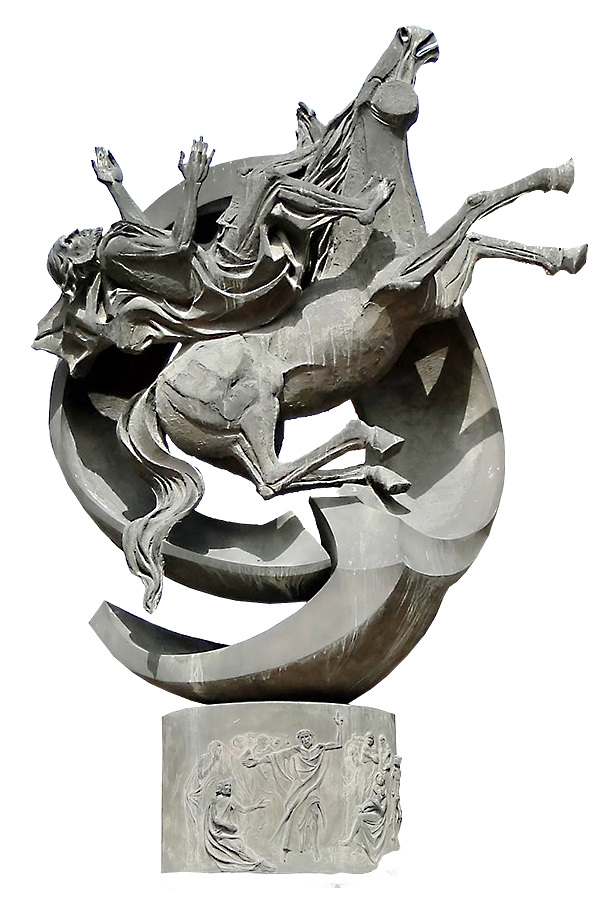
The most famous doctors of the law had a trade. The following aphorism was coined: «Rabbi Gamaliel said: it's a beautiful thing to study the Law together with a manual trade, because by doing both, you forget sin. Any study of the Law that is not united with work is vain and leads to sin.» (Aboth 11,12). This profession assured Paul of social integration, a livelihood that would make him independent of his communities (Acts 20,34) and finally contact with the world of work so despised by the Greco-Roman aristocracy.
Greek is his ordinary language. Not Attic or classical Greek, but the «common» Greek (koine) of everyday life. His Greek was never exceptional, but it was still that of a cultivated first-century man, capable of disserting on serious subjects, without research or concern for elegance, and yet sometimes reaching great heights. He continued his studies in Jerusalem under the great Jewish theologian Gamaliel (3), the light of the Law (according to the Talmud) (Galatians 1,14). It was also here that he learned Aramaic to read the ancient texts.
Image opposite Statue of the Apostle Paul in Bab Kissan, Damascus, Syria. It depicts Paul being struck down from his horse during his encounter with Jesus Christ on the road to Damascus. Bernard Gagnon.
Gamaliel is no stranger to the world: in the Book of the Acts, Luc puts it this way: «he was a Pharisee named Gamaliel, a doctor of the Law esteemed by all the people» (Acts 5,33). We know of his soothing intervention on behalf of the apostles (Acts 5,34-39). Tradition has it that it was he who introduced the Tanakh in Greek in Jerusalem. Paul was impressed by this intelligent, open-minded man, successor to the famous rabbi Hillel. Gamaliel was so honored that it was said that «...since his death, the honor of the Law has ceased, purity and abstinence have been extinguished...».
3- Gamaliel the Elder, grandson of Hillel, a leading authority on Judaism.
Tarsus, Greek city
Tarsus, originally a Greek town, was a free city in imperial times, not a colony. It was here that the future apostle Paul was born.
Tarsus is a trading city at a crossroads between the Greek worlds, the Anatolian plateau, Syria and Egypt. Its geographical location gave it easy access to wool from Cilicia and iron from the Taurus by the road linking Ephesus to Syria through the rock-cut Cilician gates.
The widening of the Cydnus river into a sheltered lake enabled the development of a port, the end of the maritime import route for Egyptian wheat and flax.
From Asia came spices, perfumes and silks from India and China.
In Roman times, textile craftsmanship was very important in Tarsus, as was the trade in woollen and linen fabrics. This makes it likely that Paul's family was involved in these activities, with outposts in various towns, and that Paul learned the trade of tentmaker.
Image opposite Restitution of the Great Roman Temple of Tarsus, Cilicia, in antiquity. Franck Devedjian.

Finally, Tarsus boasted a university modelled on Athens. However, it is not certain that Paul studied Greek literature, considered immoral by the Jews, at this famous center of learning. His few literary quotations are common proverbs (Acts 17,28 ; 1 Corinthians 15,33 ; Tite 1,12). But his knowledge of paganism gave the future apostle two fundamental insights: firstly, the impurity of idolatry, and secondly, the depth of divine revelation common to all peoples, visible in nature (Romans 1.20) and in consciousness (Romans 2,14-15). This is what made him understand the universalism of grace, and put him in the vanguard, even more than the other Apostles, in the evangelization of the Gentiles (Acts 13,46-47).
Many Jews were citizens of Tarsus, a free city. Roman citizenship: hereditary privilege claimed by Paul (Acts 22,27-29) no less proudly than its Tarsian origin (Acts 21,39) (See Paul, Roman citizen). Saul of Tarsus was also a citizen of this Empire, a legislator, a colonizer and a practitioner, which embraced all civilizations through its network of roads and centralized administration. His taste for travel was indispensable to the work he would accomplish, and his title of Roman citizen would be his passport throughout the world. He also felt indebted to the Romans and Greeks alike (Romans 1,14).
The last few years
The first imprisonment in Rome
As a Roman citizen, Paul appealed to the emperor for his judgment. He was transferred from Caesarea to Rome. Paul arrived in Rome ahead of his accusers and was allowed to wait for them under house arrest, guarded by a soldier.
He reunited with friends and relatives who had left Ephesus in «54 and rebuilt a house church, as did members of his family, since the »Company of Tarsus" had an office in the Forum.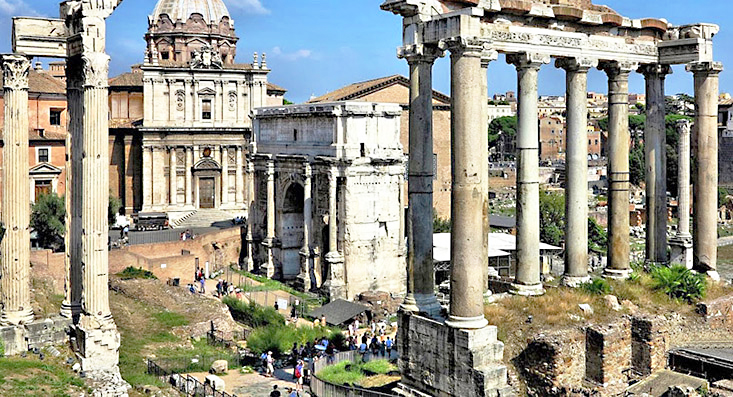
Image opposite General view of the Forum in Rome. In the center of the image is the triumphal arch of Septimius Severus, erected in 203 © Luca Bellincioni.
The wait lasted two years, and no one came to support the accusation (?). At the end of this period, Paul was free, even though the Roman statute of limitations did not yet exist. Perhaps the emperor, faced with a backlog of court cases, had decided to settle them without calling the parties to court?
Paul therefore left Rome, but we have no further ancient evidence of this period of his life.
Clement, bishop of Rome at the end of the first century and a first-hand witness to the apostolic period, speaks of a mission to Spain. But Paul's last years were spent in Asia, and it was there, certainly in Ephesus, that the apostle was arrested for the second time.
Paul's second arrest
It most certainly took place in Asia, in Ephesus, and for subversion. The proconsul soon decided to send him before the imperial court again.
Nero considered his person to be sacred, so from 62 onwards, the «law of majesty» was revived to punish offenses against the emperor, and in particular the refusal of this new idolatry attached to the emperor-god.
Image opposite a recently discovered piece called aureus - The obverse features a portrait of Nero and an inscription: NERO CAESAR AVG IMP: Nero Caesar Augustus Imperator. © University of North Carolina.
Paul was accused of magical practices such as exorcism and prophetism. At the time, this accusation had political implications and was considered subversive. Religious and philosophical sects, the first to be targeted, were torn apart. The atmosphere of denunciation and fear in Rome in the years 66-68 explains the break-up of the group of Christians around Paul (see 2 Timothée).
Paul was condemned, driven out of Rome on the road to Ostia and executed; he was later buried - in the 4th century - probably under the present-day Basilica of St. Paul Outside the Walls.
Links to the apostle Paul's four journeys:
The apostle Paul's first missionary journey →
The apostle Paul's second missionary journey →
The apostle Paul's third missionary journey →
The apostle Paul's fourth journey, in captivity, to Rome →
The Temple of Apollo in the ancient city of Corinth, one of the milestones of the Apostle Paul's missionary journeys © borisb17.
The Temple of Apollo in the ancient city of Corinth, one of the milestones of the Apostle Paul's missionary journeys.
The ancient Roman road near Tell Aqibrin in Syria. It linked Antioch to Chalcis (Qinnasrin). Bernard Gagnon.
The ancient Roman road near Tell Aqibrin in Syria. It linked Antioch to Chalcis (Qinnasrin).
The Roman agora and the Tower of the Winds in Athens. Andreas Trepte.
The Roman agora and the Tower of the Winds in Athens.
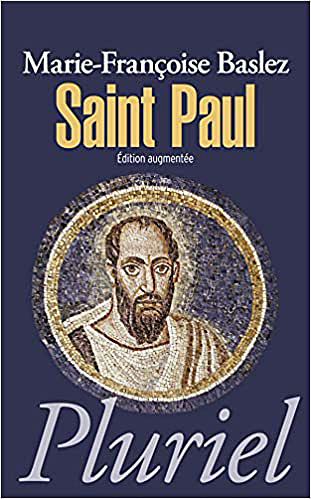
Find out more
BASLEZ Marie Françoise, Saint Paul.
History and archaeology collection. Pluriel.
Who was the real Paul? The historical figure often cited today in philosophical and political controversies was presented by the Church as the doctrinaire of Gentile conversion. In reality, he was first and foremost a man of action. In the 1st century AD, this native of Tarsus, who became a disciple of Jesus, acted as a true religious entrepreneur, criss-crossing the Roman East to multiply the nuclei of believers...
Éditions Arthème Fayard/Pluriel, Paris, 2012.

